Paper Doll
Organize for an Accident: Don’t Crash Your Car Insurance Paperwork [UPDATED]
[Editor’s note: This post originally appeared on Paper Doll on 1/23/2020 and has been revised and updated as of 8/8/2022. As many college students are headed off or back to their universities with cars, this is an ideal time to discuss the finer points of auto insurance.]
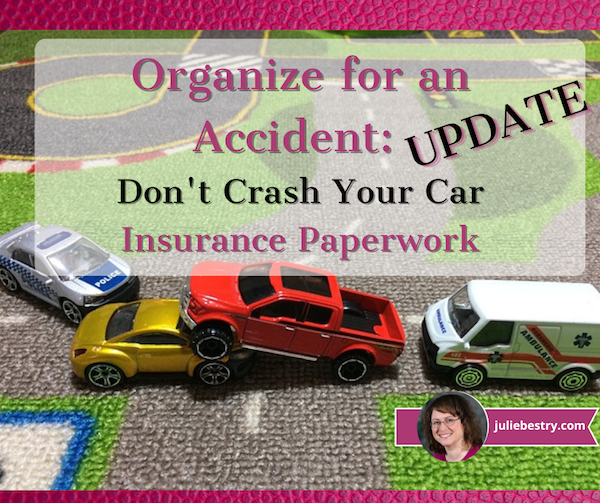
(Image by Andrea Closier on Pixabay)
What happens when an unstoppable force meets an immovable object?
In January 2020, Paper Doll was sitting at a traffic light, preparing to make a turn, when the car behind me answered that physics question. Luckily, it was more of a THUD or a BAM than a CRUNCH. However, even the most minor of fender benders can be scary and overwhelming. It’s definitely not the time to wish you’d been more organized with your car insurance paperwork.
Even the most minor of fender benders can be scary and overwhelming. It's definitely not the time to wish you'd been more organized with your car insurance paperwork. Share on XToday, we’re going to look at the different kinds of paperwork you need, and how to organize it, to make sure you are protected and confident regarding your car insurance.
APPLYING FOR CAR INSURANCE
Whether you’re new to driving, are changing insurance companies, or are insuring a new car in your household, there are certain documents you’re going to need when you apply. Having everything in order ahead of time will make the process move more smoothly. You will need information about yourself, any other drivers covered on the policy, and the vehicle, such as:
Social Security Number(s) — You will need the SSN of anyone who is to be covered on your policy.
Your Driver’s License — Some insurance companies will only need the license number; more old-school agents may want a photocopy of your license. If, like me, you don’t like letting your license out of your hands, make a few photocopies of your license and you’ll have them when you need them.
Your insurance company isn’t just verifying that you are licensed to drive. They’re going to check your driving record — also called a Motor Vehicle Report (MVR) in some areas — to verify that your license hasn’t expired or been suspended, and to see whether you’ve had any accidents, convictions, or traffic violations. Most states look at your driving record for the last three years; however, there are exceptions. Kansas and New Jersey reports go back five years; Colorado, Indiana, and West Virginia look back seven years.
WalletHub has a state-by-state guide to getting a copy of your MVR, with links, in case you want to check it for accuracy before seeking insurance. In my state, I can get a copy for $5 in person or or online; nationwide, costs range from $2 to $25 (sometimes plus processing fees to use debit/credit cards) per report. Be prepared to use an authentication app, like Google Authenticator, or receive a text or email or verify your identity.
Do not be scammed into using a non-governmental service that promises to get your MVR online for you; they up-charge a significant amount and are usually not any faster than going through your state’s website.
Financial History — Insurance companies do standard credit checks, so it’s a good idea to check your credit history at AnnualCreditReport.com (and not one of the shady copycats), as well as your credit score, to make sure there are no mistakes.
Your Current Insurance Declarations Page – You know that long page (or set of pages) in your policy with big numbers like $300,000/$500,000? (More on that, below.) Having that page will allow your new insurer to provide you with an apples-to-apples quote.
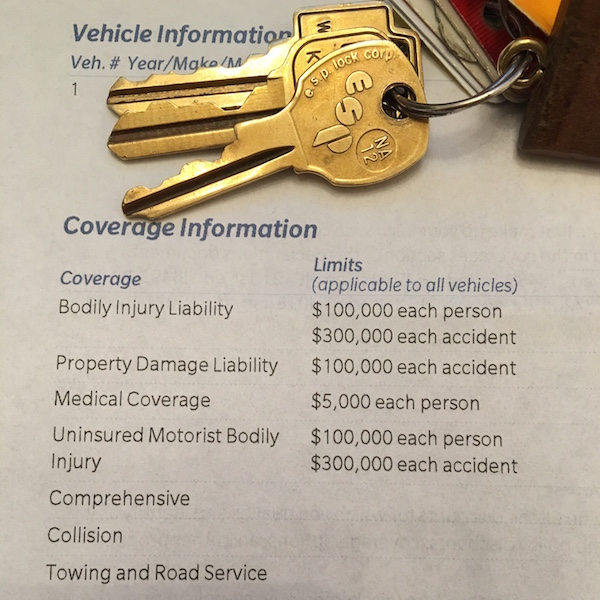
Vehicle Information Number (VIN) — This 17-character identifier is unique to your car and is built into your dashboard or imprinted in your driver’s side door frame. Your insurer uses this to verify that the car is not stolen and doesn’t have any problematic history.
Discount-Related Paperwork — There are a variety of ways to get a discount on car insurance. Your driving record (MVR) will verify if you qualify for a “good driver” discount, and you (or your teenager or college student) may be able to submit a current report card to qualify for a “good student” discount. To get the discount, students usually need to be under 25 and have no at-fault or moving violations on their MVR. A GPA of 3.0 (on a 4.0 scale) or Honor Roll/Dean’s List status is generally required.
You can also get multi-car discounts if you and your spouse both have cars, or multi-policy discounts if you carry homeowners’ or renters’ insurance with the same company.
If you’re over a certain age, you may be able to take a safe driver course, like one offered by AARP, to lower your rates.
You might be eligible for affinity discounts if you are a member of certain clubs, organizations, alumni associations, or sororities/fraternities. There are also often occupational discounts for members of certain professions, including first responders and medical professionals, educators, and government employees, so it’s worth asking your agent what discounts exist before you get too far in the application process.
ORGANIZING YOUR INSURANCE PAPERWORK
Once you have an auto insurance policy in place, you’re going to have paperwork. The more organized you can be, up-front, the less stress you’ll have to deal with in case of an accident or other issue.
Policy
This is the multi-page legal document that tells you everything about your coverage. It can be overwhelming. Make sure you go over it with your insurance agent so that you know and understand the essential elements of your policy, particularly the items on your declarations page, which spells out your coverage:
- Liability (also called Bodily Injury Liability) — These are the limits on your policy per person per accident. You may see $100,000/$300,000, which means you’re covered for any medical expenses and/or lost wages for anyone (including other drivers, passengers, and even bystanders) injured in an accident you cause, up to that amount.
- Property Damage — This pays to repair or replace things that get damaged (in an accident you cause), like other people’s cars, items in their cars that get damaged, actual property (like someone’s garage or mailbox). The dollar limit is quoted per accident. Be sure you understand the difference between collision and comprehensive. Collision covers damage to your car when it collides with another car, or a tree, or a Bob’s Big Boy. Comprehensive covers damage to your car caused by things like vandalism or theft by hooligans, or “natural” disasters (hail, tornadoes), a tree toppling onto your car, or Bambi taking a running leap at your hood.
Your policy may combine liability and property damage into one category, so you might see it listed with three numbers, like “100/300/50” which means $100,000 for injuries per person, $300,000 for total injuries per accident, $50,000 for damages to property.
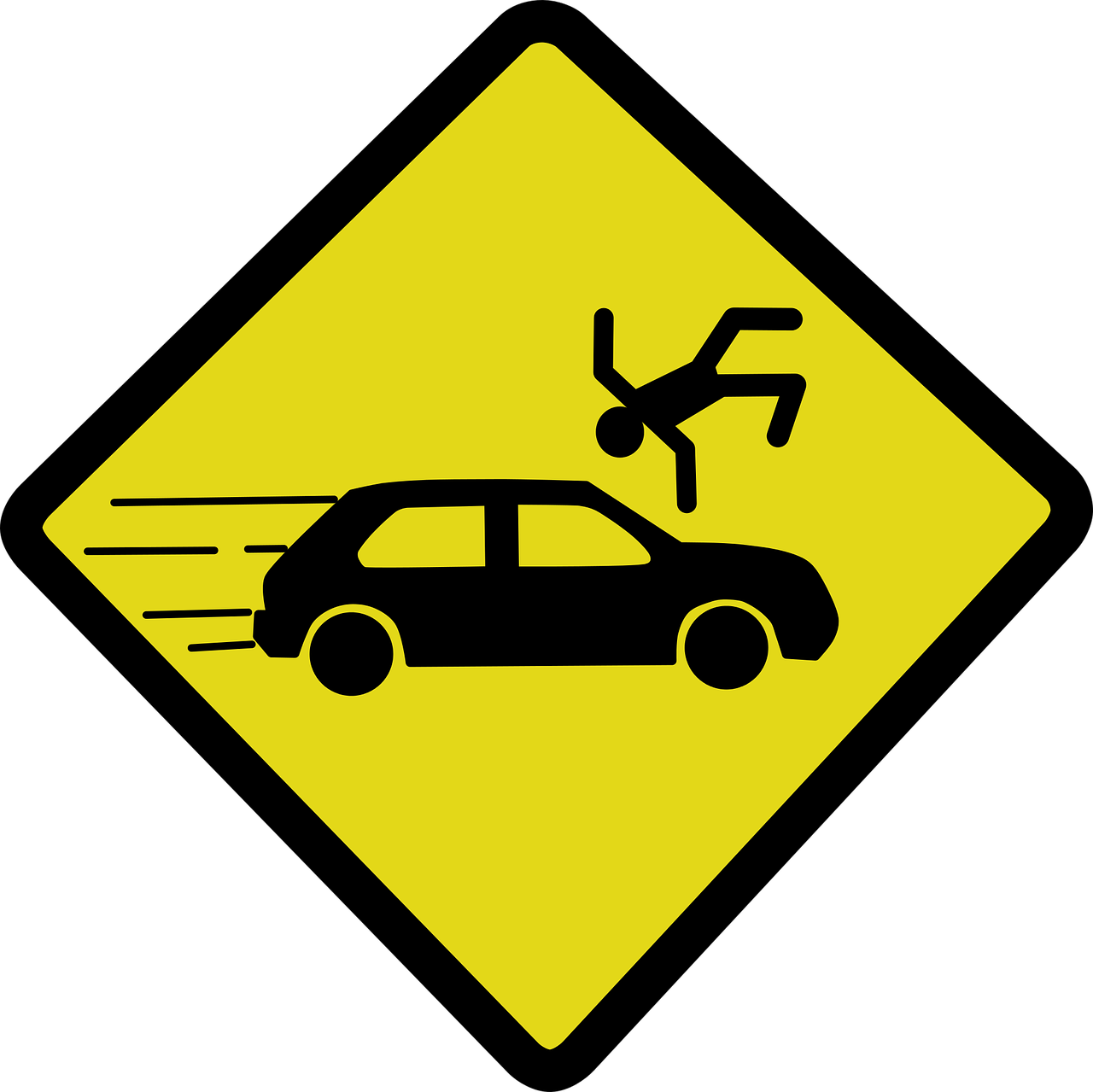
Depending on your state, your policy may also have (or even require) special types of insurance options, like:
- Uninsured and underinsured motorist coverage — If someone hits you but doesn’t have enough (or any!) insurance, it will cover injuries if you or your passengers get hurt. Basically, you’re insuring yourself against people who aren’t responsible enough to have (enough) insurance. There’s also a line item for uninsured motorist property damage; as you may have guessed, it covers your car if the person who hits you doesn’t have insurance.
- Personal injury protection insurance (PIP) — If you live in a “no-fault” state, this pays out for medical expenses for minor injuries or lost wages for you or your passengers. (Liability coverage is only invoked if the costs go beyond what PIP covers.)
- Medical payment coverage — Like PIP, this covers you or your passengers’ accident-related injuries, no matter which driver is at fault. It doesn’t cover lost wages, and the limits tend to be $5,000-10,000.
Your policy may also cover things like glass replacement damage, towing and road service, accident forgiveness (to keep your rates from going up after an accident claim) and loss of use (for a car rental while a vehicle is being repaired).
I encourage clients to make a file folder for each insurance policy they own (auto insurance, homeowners, etc.) and keep it in the Legal section of your Family File System.
The declarations page is a good cheat sheet for all of your coverage. You may want to make a photocopy and keep it in your glove compartment, or take a photo/scan to save in Evernote, Dropbox, or a similar app accessible on your phone.
Notes for Canadian Readers
Please note that all of the above refers to purchasing auto insurance in the United States. In Canada, different language is used. For example, in addition to provincial and territorial mandatory coverage, there are optional policies including “collision, specified perils, comprehensive, and all perils.” If you are seeking information regarding auto insurance (and organizing insurance paperwork) in Canada, please confer with an insurance professional (or a member of Professional Organizers in Canada).
Bills for Premiums
Insurance companies usually give you the option of paying annually, twice per year, or monthly. The less often they have to invoice you, the more likely you are to get a discount, so paying every six months can save you a bit over monthly bills.
If you receive paper bills, mark the payment date, amount, method of payment (and confirmation number, if applicable) on the invoice and file it in the Financial section of your Family File System.
If you tend to go paperless, print a PDF or take a screen shot of the confirmation screen and keep it in a “paid invoices” folder on your computer, and be sure to able it clearly, like “2022-May Ins-Car.”
Re-shopping Insurance Policies
In April 2022, I made a few calls to investigate the rates of competitive auto and rental insurance policies. When I found an auto policy that was significantly lower than what I’d been paying (while not increasing my associated renter’s policy) for an equivalent policy with an equally reputable insurance company, I contacted my agent.
I was surprised, delighted, and then admittedly annoyed when my agent “magically” found me an even more competitive rate. (A reminder: companies generally do not go looking for ways to reduce consumer costs!) However, even though I was staying with my same insurance company where I’d been for 24+ years, my policy was technically with a new sub-company, and my “accident forgiveness” guarantee went away, as if I were a new policy holder. However, I was able to retain that status with a $20 one-time fee. Caveat emptor!
So, do consider shopping for better rates/discounts at least every couple of years. It’s not fun, but it’s not as inconvenient as you might imagine. If you like your current insurance agent/company, give them the opportunity to surprise, delight, and slightly annoy you by magically finding better rates.
Proof of Insurance Cards
This little card has your name and address, your car’s VIN, make, and model, your insurance company’s name and contact information, and your policy number. It is the only document that verifies the coverage on each of your cars, so keep your proof of insurance somewhere safe in case you need to present it to a police officer or someone with whom you’ve had a driving “misadventure,” or to have information handy if you need to file a claim or report damage to your insurer.
Most insurance companies provide two proof of insurance cards on one piece of paper with your policy renewal. Consider putting one in your wallet and one in your glove compartment. If your glove box is not always tidy, you may want to consider something that keeps important documents front and center, like this car insurance and registration card holder in a bright color.
Paper Doll’s Ultimate Guide to Getting a Document Notarized
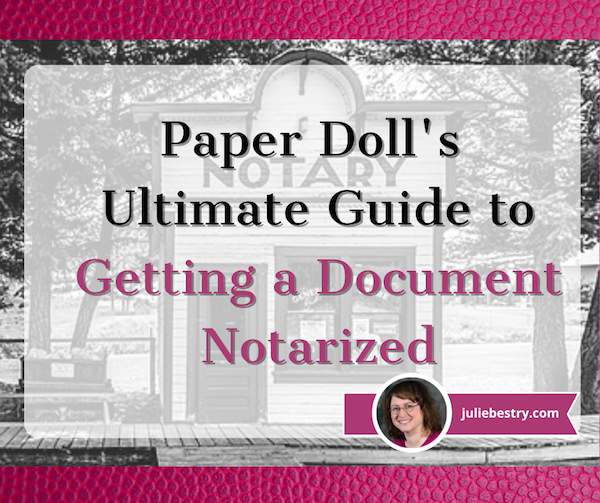
When I was little, I thought a notary public was “Note of Republic.” After all, the concept of [“thing] of [location]” is a known form of expression. Consider Governor of Minnesota, Justice of [the] Peace, or Man of La Mancha. I figured “Note of Republic” meant that it was a document related to our country.
C’mon, it’s weird to hear “public” after a word. We have Certified Public Accountants, not Certified Accountants Public! We’re used to public school, public pool, public park, public relations. What the heck, I wondered when I first saw the expression properly written, was a notary?
Yes, I’m a grownup now, and (mostly) understand what notaries do, but unless you have used a notary’s services or are a notary yourself, you might wonder how it all ensures your legal documents are organized and squared away.
WHAT DOES A NOTARY DO?
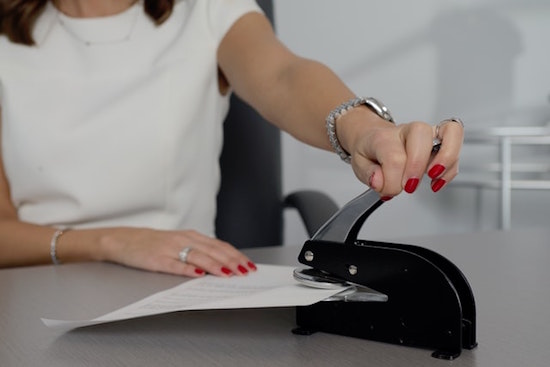
Notary Stamp by Stephen Goldberg on Unsplash
According to the State of Tennessee (where Paper Doll resides), a notary public is:
a person of integrity who is appointed to act as an impartial witness to the signing of an important transaction and to perform a notarial act, which validates the transaction. A notary’s primary purpose is to prevent fraud and forgery by requiring the personal presence of the signer and satisfactorily identifying the signer.
Let’s look at how those elements come into play:
- a person of integrity — The rules vary by state, but generally, you have to be at least 18 years old, a citizen of the United States (though in some states, you need only be a permanent resident), either reside in the state or operate a business in that state, and be able to read and write in English.
You also have to submit an application and purchase a notary surety bond, which is like an insurance policy in that it protects the public in case a notary makes a grievous error.
As you might guess, people with felony records would not fall under the “person of integrity” definition and can’t become notaries. However, while we can all imagine various failures of integrity (bullying, gossiping, cheating at Scrabble), those don’t generally prevent someone from becoming a notary.
- act as an impartial witness — notaries can’t notarize their own signatures, transactions in which they are participants, or documents for their family members or friends.
- requiring the personal presence of the signer — until recently, “personal presence” was literal, but as we will see later, a virtual presence is sometimes an option.
- satisfactorily identifying the signer — this involves the signer being able to provide documents that prove identity.
WHAT ARE THE DIFFERENT TYPES OF NOTARIZATION?
If you’ve never had to get something notarized before, you may assume that there’s just one kind of notarization, where the notary says, “Yup, I’m acknowledging that I just saw you sign this thing.” But it’s more complicated than that.
There are main three types of notarizations:
1) Acknowledgements — The notary is saying, “OK, I just saw this person [verified as the lovely Ms. Nell Fenwick] sign this document willingly; there was no mustache-twirling Snidely Whiplash threatening to tie this person to the railroad tracks if they didn’t sign over the rights to their goldmine.” (What, don’t tell me you never watched Dudley Do-Right!)

There are some essential elements here:
- The signer (that’s Nell) has shown up in front of the notary.
- The notary has been able to positivity identify the person is actually Nell (according to the individual state’s regulations).
- The signer has either signed the document before showing up or must sign it in the notary’s presence.
- The signer has to be able to communicate directly to the notary that the signing is willingly done, at least in 49 states. However, in Arizona, the law allows signers to communicate their willingness to the notary through a translator.
(Also, for the purposes of this blog post, Nell and Snidely are in the United States, not Canada where the cartoon takes place. With apologies to my international readers, non-US notary regulations were far too complex to include in today’s post!)
The notary is required to make sure that the individual understands what the document is and what it means and what the consequences are, in addition to being willing to sign and not under any appearance of being coerced.
Obviously, notaries are not mind-readers; they can’t be certain a person isn’t in an emotionally abusive relationship or having their loved one held for ransom, but a notary can refuse to notarize a document if something seems seriously hinky. The notary can ask all sorts of questions, ranging from the kinds of questions first responders ask accident victims to those of a more legal nature. If the signer appears drunk or under the influence of dugs, or to be suffering from dementia or is otherwise seems cognitively, the notary can (and must) decline to notarize the document.
Acknowledgments are used when you’re getting any of a variety of documents signed, like a contract, a Power of Attorney, or a last will and testament.
2) Jurats — This old-timey, legalese expression (also known as “verification upon oath or affirmation” means that the signer is swearing (or affirming) to the notary that the contents of document they are signing are true.
- As a signer, you must show up and sign the document in front of the notary.
- In many (but, to Paper Doll‘s surprise, not all) states, the notary must verify the signer’s identity.
- The notary administer’s a verbal oath (or affirmation) and the signer must respond aloud* in such a away as to confirm mutual understanding. No nods or thumbs-up are allowed.
*I tried to find verification of what is required if the signer is deaf or is not able to speak, and while there don’t seem to be uniform answers, I was able to learn that communication through a translator or sign interpreter is not enough, though the notary and signer are allowed to communicate in sign language, via writing notes on paper, or typing on a computer, tablet, or cell phone, as long as they are in one another’s presence.
In theory, signers are supposed to raise their right hands while making the oath or affirming (just like in a courtroom), but it’s not required by law. (It’s just to make it obvious that this is more serious, legally speaking, than telling your college roommate’s mom that your roommate is in the shower she’s actually sleeping at her boyfriend’s dorm.)
The idea of an oath or affirmation may ring a bell if you’ve watched a lot of courtroom dramas and have heard, “Do you solemnly swear…”
In brief, an oath is a pledge before a religious entity. As some faiths do not allow oaths to be taken in civil settings, and as some people do not adhere to religious precepts, individuals get a choice. For more on the difference, the National Notary Association has made a short video to explain:
A jurat is used when you must notarize testimony. Imagine you are asked to notarize your statement that you witnessed Ms. Lucy Van Pelt promise not to pull the football away from Mr. Charlie Brown but then she pulled the football away, causing him to kick at the air, fall on his back, and complain of seeing stars.
There are different forms or certificates that notaries use for each notarization, whether acknowledgements or jurats. Generally, an acknowledgment certificate will say something like “acknowledged before me” (where “me” is the notary), while the jurat certificates will say something like, “subscribed and sworn to (or affirmed) before me.”
3) Copy certifications — This is when a notary confirms that the copy of a document is an exact match to the original version. Not all states allow this type of notarization.
Notaries can also provide other services. They can administer oaths, like those given to people deposed in legal depositions. (Notaries can’t administer oaths of office for government service or in a military setting, though.) In Maine, South Carolina, and Florida, they can also perform marriage ceremonies!
Pretty much any kind of document can be notarized except for government vital records documents, like birth and death certificates, or marriage certificates. Notaries aren’t allowed to notarize, make, or certify copies of these; instead, you have to go to the appropriate government agency to get certified copies. For more on that, see Paper Doll‘s post from last year, How to Replace and Organize 7 Essential Government Documents.
HOW CAN YOU PREPARE TO GET SOMETHING NOTARIZED?
First, be sure you know exactly what you need to get notarized and fill in all of the blank spaces (except, as applicable, the signature line).
Next, make an appointment with a notary. While you can sometimes show up at a notary’s office, you wouldn’t want random people showing up to your place of work, unannounced, and have to squeeze them in. Be cool, dude.
Verify the fees you’ll be paying and ask how the notary accepts payment. Notary fees differ by state and notarization type, are set by law for most states, so you can check with your state’s Secretary of State’s office for the basic fees; however, notaries can charge separate fees for travel and for remote services.
Notaries at banks may not charge anything for the service, and notary at companies (like the UPS Store) may allow any of the payment methods the company already accepts for other services. But self-employed notaries are allowed to make up their own payment policies, and might require payment by cash or check; don’t assume they’ll take Venmo.
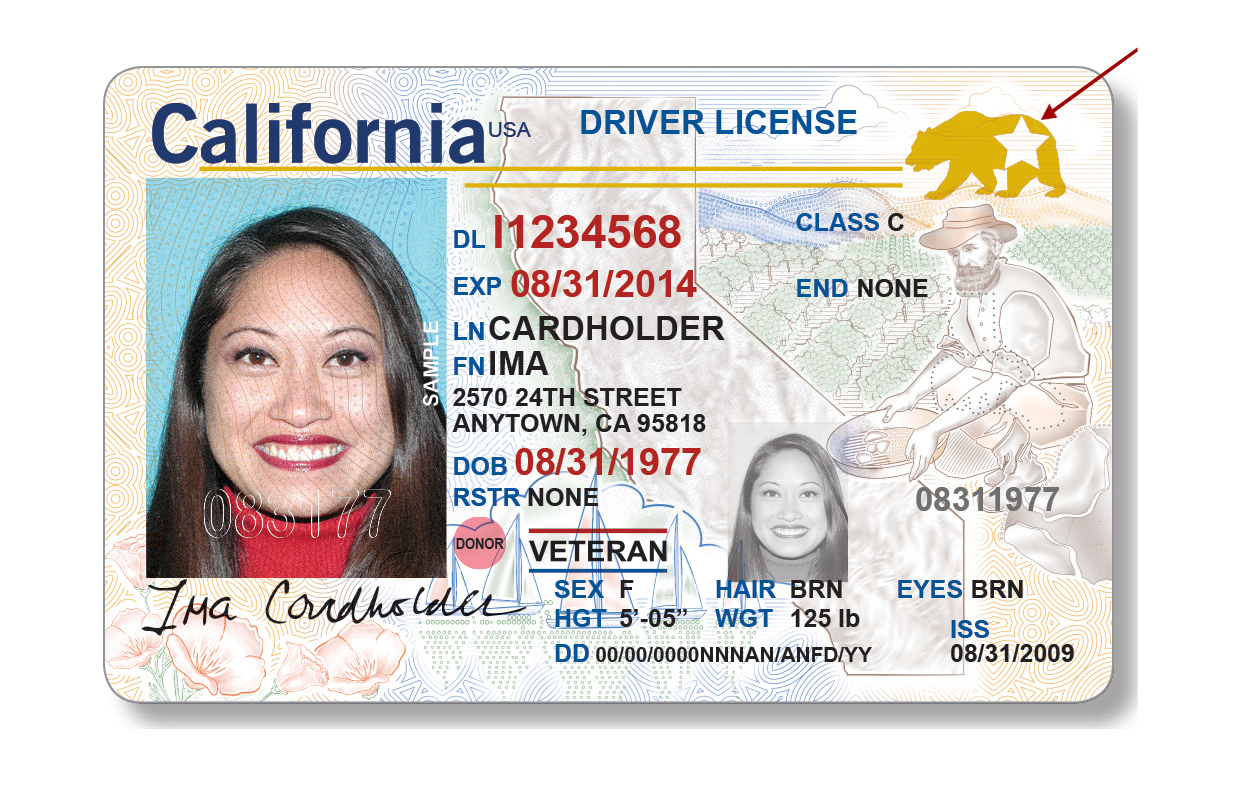
Bring your photo ID. Remember, the notary’s job is, in part, to verify that signers are who they claim to be, and that can’t be done if the signers do not present valid ID. Usually, a government-issued ID with a photo, like a driver’s license or password, is required.
If someone lacks legal identification, the situation isn’t impossible, but it’s fraught. For example, let’s say that Grandpa is in an assisted living facility, hasn’t driven in a decade, and doesn’t have a passport or a government issued photo ID. In many states, the signer can call upon “credible identifying witnesses,” people willing to swear to the notary that they know Grandpa and that he is who he says he is. But Grandpa’s witnesses are going to have those required forms of identification.
Speaking of ID, make sure the name on your ID matches the name you’re using on the documents you need to have notarized. If you’ve recently gotten divorced and have returned to your “maiden” name, or have married and taken your spouse’s name or hyphenated your names, you’ll need to show ID that reflects that change.
Make sure everyone who needs to sign is available for the appointment. (If someone in your family always shows up late, you might want to “accidentally” tell them a slightly earlier time — or drive them yourself!)
Know what the heck you’re going to be signing and what it means. The notary has to make sure that the signer is willing to sign and fully aware of what they’re signing. Paper Doll shouldn’t have to tell you this, but don’t show up at the notary’s office after a boozy brunch. (In the case of Grandpa, above, you might want to warn him that the notary might ask some questions to make sure he’s mentally alert and not signing under duress, so he’s not offended by the questions.)
Be prepared to sign the notary’s log book, which is also known as a public journal. Most states require that notaries keep a log book or journal of all the notary-related acts they perform. It covers all the nitty-gritty details of the transaction, so if a notarized document goes missing, gets stolen or altered, or anything becomes a matter of legal dispute, the record can be set straight. Plus, it keeps everything so nice and organized.
A few years ago, a friend contacted me and asked if I would serve as a witness so that her elderly mother could get some documents signed and notarized. In addition to having to sign my name on the various documents as a witness, I had to sign the notary’s log book/journal, provide my photo ID, write my driver’s license ID number, and provide my thumbprint (which was less messy than I expected, but made me feel like a character on Law & Order).
WHERE CAN YOU FIND A NOTARY?

Photo by Matthias Süßen, CC BY-SA 4.0 , via Wikimedia Commons
You may assume that because any notary can notarize your document that any notary will, but that’s not the case. For example, several years ago I needed to sign a document for Paper Mommy and have my signature witnessed and notarized.
Most banks provide notary services, and I was delighted to see that Bank of America provides fee-free notary services. So, I went to Bank of America, where I had both personal and business accounts, but once they saw that it was a Power of Attorney document, I was told that bank employees were not allowed to notarize it, as a matter of company policy.
In the end, I got my signature notarized at the UPS Store just up the block from the bank. It felt odd to be getting a legal document notarized next to people buying bubble wrap and making Amazon returns, but the process was quick and easy, and the fee was reasonable.
In addition to banks and credit unions, you may be able to find notary services at any of the following:
- Law firms — Sometimes paralegals and legal secretaries are notaries, and the process will be faster than trying to see an attorney-notary.
- Real Estate firms — Call your agent; if you’re a renter, ask your friends if any of them loved their real estate purchase experience and how they got documents notarized.
- Accountants — You may be out of luck if you file your taxes with H&R Block or TurboTax, but if you have a relationship with an accountant (and aren’t pestering her during tax season), you might get lucky.
- Package shipping stores like the UPS Store (hey, it worked for me) and FedEx Office (which they offer through a virtual service, of which there’s more below)
- AAA — Most regional AAA offices provide free notary services as part of membership. However, AAA can’t notarize business contracts, mortgages, or wills; if you’ve got to notarize an auto sale, Power of Attorney documents, trusts, or affidavits, though, you’ll be fine. You can’t always make appointments at AAA, so you may end up sitting in the lobby for a while until it’s your turn.
- Public libraries — Many library systems have notaries on staff; you may have to go to a branch that is not where you usually borrow, so call to verify which branches have notaries available. The notaries at your library may be limited as to which documents they can notarize; mine can notarize sworn statements, Power of Attorney documents, rental agreements, copy certifications, and more, but can’t notarize real estate transactions, wills, divorce papers, employment verification forms, Homeland Security I-9 Forms, or documents in languages other than English.
- Colleges — If a member of your family attends a college or university, call the bursar’s office. They’re likely to have someone on-staff with notary credentials or will know where to go.
You can also find notaries the old-fashioned way, by searching the Yellow Pages, using a search engine (e.g., type “notary services [your town]” into Google), or searching statewide notary databases.
Weirdly, there does not seem to be a database of notary databases (which feels awfully disorganized of them), so you’ll have to search for your state’s database through a search engine or by looking at your state’s Secretary of State website.
You don’t have to go to the notary; notaries will come to you!
Over the last few decades, mobile notaries have become a thing. The same notaries whom you can visit for services may provide mobile notary services for an additional fee. Type “mobile notary near me” into your favorite search engine.
As I mentioned earlier, when a friend needed to have her mother’s documents signed, witnessed and notarized, my experience as a professional organizer (and resource researcher) came in handy, and I was able to recommend a wonderful Chattanooga notary public. While there was an additional fee for him to travel to my friend’s location, it far outweighed the inconvenience (and likely impossibility) of getting her elderly and infirm mother to the notary’s office.
Thus, you’ll want to weigh the cost of us using a mobile notary against the convenience of having someone come to you.
WHAT IF YOU CAN’T GET TO A NOTARY (AND ONE CAN’T GET TO YOU)?
A notary can’t just notarize a person’s signature over the phone or Zoom. I know. Bummer.
That said, as a result of lessened bureaucracy due to the COVID pandemic, there’s Remote Online Notarization, or RON. (No, not Ron Weasley from Harry Potter, though it really does seem pretty magical.)
Remote online notarization companies connect a signer with commissioned notaries public (yes, that’s the official plural of notary public, like attorneys general or culs-de-sac) who are authorized to notarize documents remotely via a webcam.
When I originally started researching this post, 24 states allowed notaries to do RON; 24 had temporary regulations allowing it during COVID, and two had weird limits. Then Connecticut rescinded authorization but ten more states made it permanent. But last week, the House of Representatives passed the Remote Online Notarization Bill, which (assuming it passes the Senate) should make secure online remote notarization much easier to access.
Two of the best known remote online notarization service providers are Notarize and NotaryCam.
First up, Notarize.
Who knew notarization could be so funny?
Download the iOS or Android version of the Notarize app or use your computer’s browser. Then snap a photo of the document and upload it (or upload a PDF, or drag-and-drop the document onto the computer’s browser). Then provide your proof of identity, and connect to the notary via the platform’s webcame. Pricing for individuals starts at only $25.
NotaryCam is similarly priced at $25 (or $79 if you’re outside the US). Your document has to be a PDF, and while you can use a Mac or PC, if you don’t want to fiddle with plugins, use Chrome or Firefox. When mobile, iOS is fine but NotaryCam sounds pretty iffy about using Android.
Both platforms are secure, legal, and operate 24/7/365. For what it’s worth, NotaryCam seems oriented more toward real estate and other professionals than toward consumers; Notarize is a little more intuitive and aimed toward both a Regular Joe consumer audience as well as professional.
Have you ever had adventures in getting something notarized? Please feel free to share in the comments.
Finally, now that you’ve made it through this master class in notarization, you deserve a little fun. If you watch to the end, you’ll find that Inspector Fenwick of the Royal Canadian Mounted Police could have used the services of a notary to figure out who was whom!
Organize Back-to-School Savings: Tax-Free Holidays & Discount Codes

Photo by Kelli Tungay on Unsplash
Finances are tight these days. (Let’s be real — when aren’t they?) Inflation is frustrating our bank balances, and corporations are reaping record profits, frustrating our sense of fairness and propriety. Energy costs are surging just as it’s ridiculously hot in most of North America (and elsewhere). And while gas prices have dropped 40-straight-days as of the writing of this post, it’s not like that makes it any more delightful to pay at the pump.
And now, shockingly, it’s time to start thinking about organizing for back-to-school shopping.
Depending on where you live, you’re either nodding or looking shocked; if it’s the latter, it’s because you live, like I did when I grew up in Buffalo, New York, where kids don’t go back to school until after Labor Day. So for you, talking about back-to-school in July is like putting up Christmas decorations right after Halloween. (Oy. Never mind.)
The point is, there’s something going on right about now that can help you organize your financial resources for the back-to-school period.
ORGANIZE YOUR FINANCES WITH TAX-FREE HOLIDAYS
Throughout the year, many states have tax-free holiday weekends or weeks, and they are usually clustered in these mid-summer weeks to coincide with the back-to-school season for the southern states, where students return to school in early August, rather than post-Labor Day.
These states generally allow retailers to sell clothing and footwear, school supplies, computers, and sometimes backpacks, books, and other “tangible personal property” without charging sales tax. In my state, that’s a savings of 9.25%. Combine that with various 10%-off to 40%-off sales, and that’s a great opportunity to stock up on necessities.
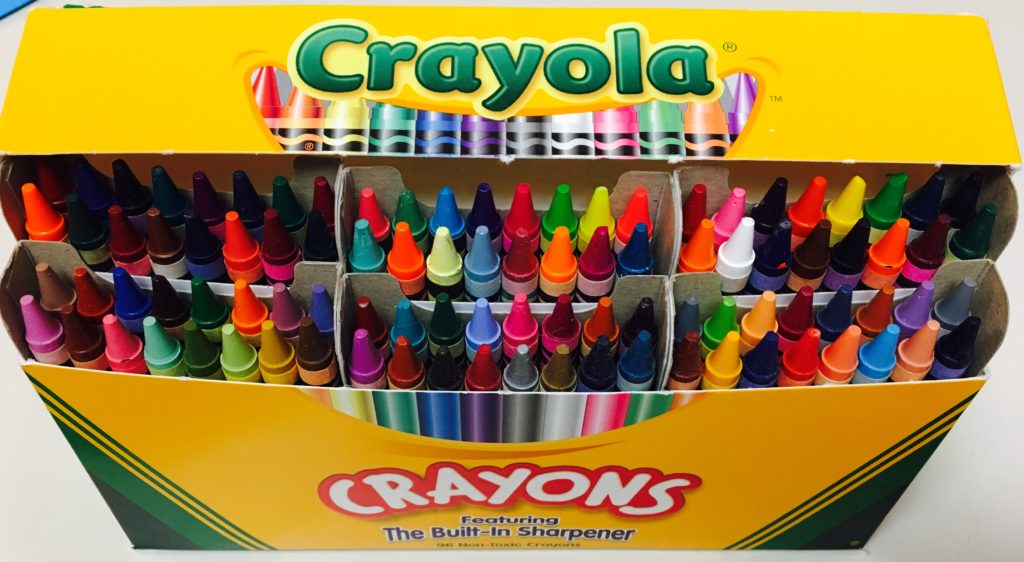
Seventeen states scheduled back-to-school tax-free holiday weekends or weeks in 2022. If your state is not listed below, consider clicking on the name of your nearest state to be directed to that state’s official tax-free holiday page.
Note: Alabama’s tax-free holiday period has already occurred (July 15-17, 2022, and generally starts on the third Friday in July and ends at midnight on the following Sunday); watch the Alabama Department of Revenue website for 2023’s schedule.
Arkansas (August 6-7, 2022)
Tax-free: Clothing and footwear (up to $100); clothing accessories and equipment (up to $50); school and academic art supplies; scholastic instructional materials (including, but not limited to books) (no dollar limit)
Connecticut (August 21-27, 2022)
Tax-free: Clothing and footwear (up to $100)
Florida (various tax-free dates — see below)
May 14-August 14, 2022: children’s books
July 25-August 7, 2022: Clothing, footwear, and accessories (up to $100); school supplies (up to $50); learning aids and jigsaw puzzles (up to $30); computers and accessories for personal/non-commercial use (up to $1500).
Note: this overlaps with a year-long tax-free Florida holiday on baby/children’s clothing, shoes, and diapers, from July 1, 2022-June 30, 2023.
Illinois (August 5-14, 2022)
Reduced tax rate to 1.25%: Clothing and school supplies (up to $125)
Iowa (August 5-6, 2022)
Tax-free: Clothing and footwear (up to $100)
Maryland (August 14-20, 2022)
Tax-free: Clothing & footwear (up to $100)
Mississippi (July 29-30, 2022)
Tax-free: Clothing & footwear (up to $100)
Missouri (August 5-7, 2022)
Tax-free: Clothing (up to $100); computers/peripherals (up to $1,500); software (up to $350); graphing calculators (up to $150); school supplies (up to $50)
New Mexico (August 5-7, 2022)
Tax-free: Clothing and footwear (up to $100); desktop or laptop computers, tablets or notebooks (up to $1,000); computer peripherals/hardware (up to $500); school supplies (up to $30)
Ohio (August 5-7, 2022)
Tax-free: Clothing (up to $75); school supplies (up to $20)
Oklahoma (August 5-7, 2022)
Tax-free: Clothing and footwear (up to $100)
South Carolina (August 5-7, 2022)
Tax-free: Clothing and shoes (no limit); school supplies (no limit); backpacks (no limit); computers, printers, peripherals, and software (no limit)

Tennessee (July 29-31, 2022)
Tax-free: Clothing (up to $100); school and art supplies (up to $100); desktop, laptop, and tablet computers (up to $1,500)
Texas (August 5-7, 2022)
Tax-free: Clothing and accessories; footwear; school supplies; and backpacks (each up to $100)
Virginia (August 5-7, 2022)
Tax-free: Clothing, accessories, and footwear (up to $100); school supplies (up to $20)
West Virginia (August 5-8, 2022)
Tax-free: Clothing (up to $125 limit); accessories, and footwear (up to $100); school supplies (up to $20)
In most cases, retailers should abide by the discounts or tax-free status whether the purchases are made at brick & mortar stores, online, or by phone.
However, so that you don’t experience any surprises, be sure to double-check that the online/phone venues from which you order understand your state’s tax holiday regulations. (In case you’re wondering, yes, Amazon participates in state sales tax holidays as long as you purchase the products exempted during your state’s tax holiday. And no, I have no idea how Amazon’s computers work that magic. I still haven’t figured out how Kohl’s magically makes my receipt so much less than I’m always expecting!)
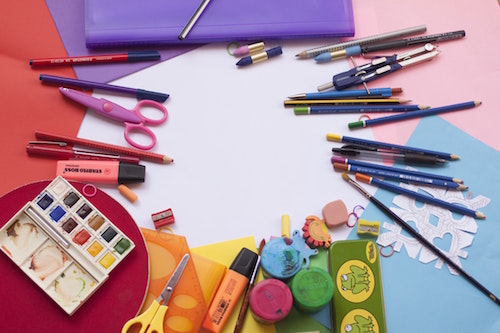
Tax-free holiday tips:
- The price limits above generally refer to the price-per-item cost, not your entire purchase. If the per-item limit is $100 and your entire bill for clothing comes to $250, but no one item is more than $100, you’re golden.
- Make a list of what each family member needs before you get to the store. (Check with your school to see if a grade-appropriate supply list has been posted online. If your school does not provide a list prior to the start of the school year, consider an online supply list organized by grade level.) It’s tempting to buy anything that seems like a bargain, but acquiring what you don’t need just because it’s a “deal” is the fast track to clutter.
- Set a budget for each shopping category so that you’re not tempted to go hog-wild, and consider what each of your students might need vs. what you can keep in a central home school supply area for all to share.
- Shopping with smaller children may stress you (and your kids) out, so consider trading shopping and babysitting time with a friend or split babysitter costs while you and your friend hunt for bargains together.
- Let older children participate — use it as an opportunity to practice math skills (“How much is this shirt if it’s marked as 15% off?”) and encourage them in finding good deals on high-quality products. The more responsible they are, perhaps reward them with the amount by which they came in under budget to apply toward something fun.
- Remember to keep your receipts in case you need to return something; note each retailer’s return policy. Again, this is a great opportunity to teach financial and organizing skills. Show them how you calculated your budget and checked the purchases against the bottom line. Have tweens and teens help you take note of return policy dates and file receipts pending any possible returns.
- Remember that tax-free holidays aren’t just for kids! In most cases, there’s a $100 limit on clothing and shoes for any age person. After all, a shirt a 15-year-old can wear might just as easily be worn by a 30-year-old, and there’s very little way to differentiate school supplies from office supplies. (What do you mean grownups aren’t supposed to use unicorn stickers and fuzzy troll pencil toppers?)
- I’m going to say this a second time — set a budget. And stick to it. The point of saving money is to have more of it, not to buy more of what you don’t necessarily need. Focus on needs, then surprise and delight yourself and your kids with a few wants, as well.
And as long as we’re talking about saving money, here are a few discounts of which you might want to take advantage, as long as you’re doing the back-to-school thing.
Bixbee
Nobody likes sales emails, but I have to admit it. Once I learned of Bixbee a few years ago, I became obsessed with their cool kid products, which include backbacks, lunchboxes, sleeping bags, and kids’ accessories.
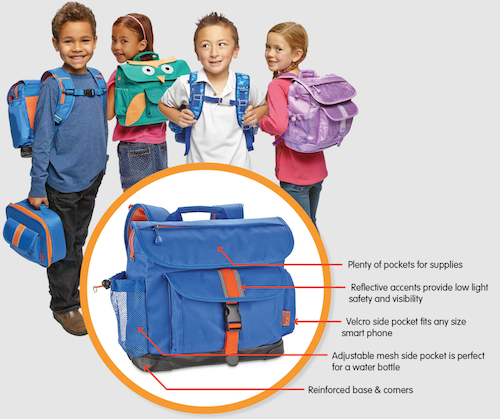
Bixbee, maker of ergonomically-smart backpacks built with the anatomy of tiny humans in mind, has some products that will charm your kids (and their spines) and keep clutter at bay.
Also, if your kids’ backpacks or lunchboxes are super-cool and fun, they’re less likely to leave them on the bus, or in their gym lockers, or just lose them altogether, which means you won’t have to make duplicate purchases…which means you save money. Whoohoo!
Bixbee also has delightful luggage and duffels for ease of traveling, rain boots and T-shirts, water bottles and just a whole bunch of kid-friendly goofiness.
You didn’t ask me, but of course I have favorites, like the Sparkalicious Ruby Raspberry Butterflyer Backpack
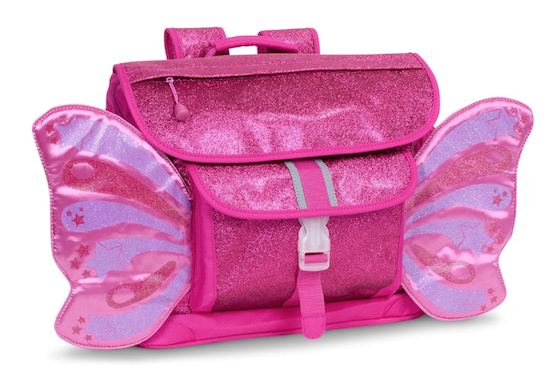
and the Monkey Backpack and the matching Monkey Lunchbox:
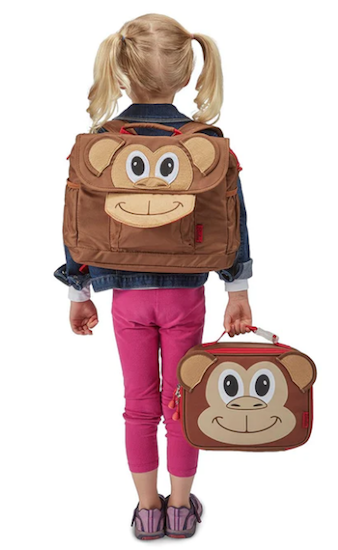
Bixbee is having a back-to-school sale. Get 25% off any purchase with the code BACK2SCHOOL but hurry, because this discount code expires on Wednesday, July 27, 2022!
Bixbee is also offering free Standard Shipping (for US customers only) on all orders over $60.00 and a FREE folder and stickers with every backpack order! (Who doesn’t love stickers?)
Academic Planner: A Tool for Time Management®
If you’ve been a reader of the Paper Doll blog for a while, then you know that professional organizer Leslie Josel of Order Out of Chaos, is a colleague, friend, and fellow Cornell University alum. And I love every darned thing this smarty-skirt does!
(For more about Leslie, you can read Paper Doll Peeks Behind the Curtain with Superstar Coach, Author & Speaker Leslie Josel. Go. Read. Come back. We’ll wait.)
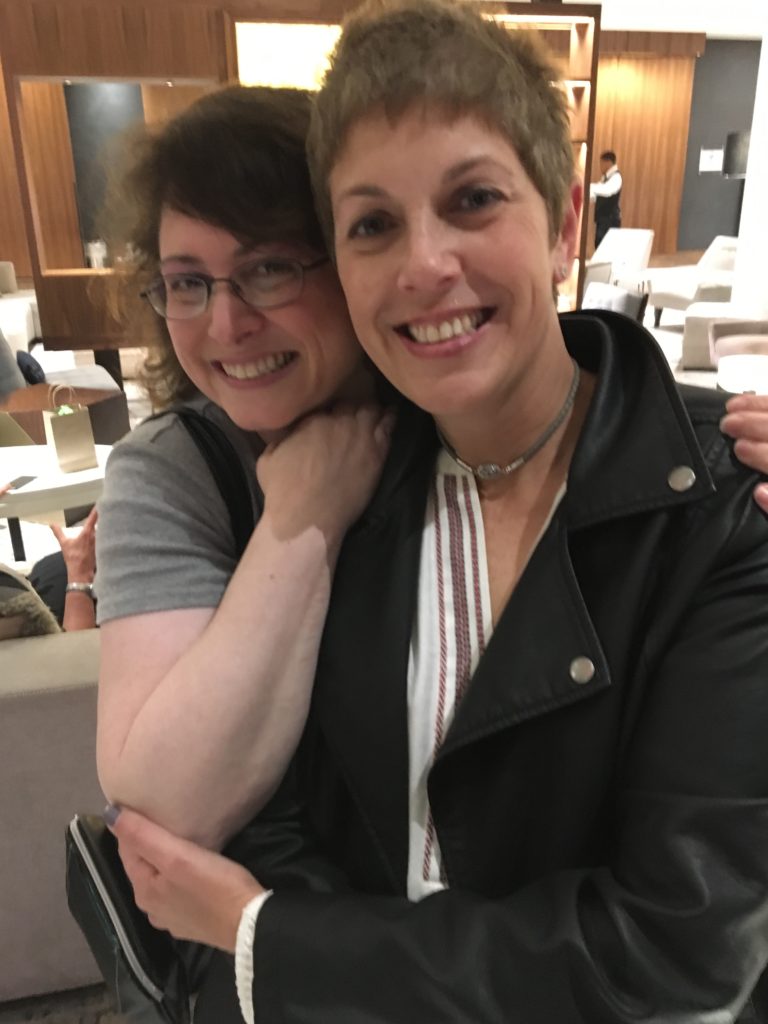
Paper Doll with Leslie Josel, © 2017 Best Results Organizing
I’ve written many, many times about Leslie’s Academic Planner: A Tool for Time Management®. The central concept behind the planner is the need to better enable students to “see” time and all of the related obligations. If you’re brand new to the Academic Planner, you can start here:
The Academic Planner has even won the 2018, 2020, and 2022 Family Choice Award!
 The spiral-bound 2022-2023 Academic Planner comes in two sizes: letter-sized planner with after-school planning (8 1/2″ x 11″) and smaller personal-sized with all-day planning (8 1/4″ x 8 1/2″), both for $19.99. Based on an academic year calendar, the planners run July through June.
The spiral-bound 2022-2023 Academic Planner comes in two sizes: letter-sized planner with after-school planning (8 1/2″ x 11″) and smaller personal-sized with all-day planning (8 1/4″ x 8 1/2″), both for $19.99. Based on an academic year calendar, the planners run July through June.
Four styles of planners in each size
The letter-sized planners with after-school planning come in LimeLight, Pretty In Pink, Blues Brothers, and WhiteOut. The interior pages measure 7” x 11”, offering up more than the typical space for writing down assignments and activities. It has 7 subject boxes and after-school planning capabilities starting at 2p.m., and is ideal for elementary, middle, and high school students and those that are virtual learning or homeschooled.
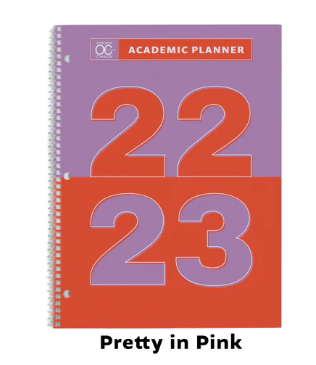
The smaller, personal-sized planner with all-day planning come in Men in Black, Purple Rain, Yellow Submarine, and AquaMan. They have 6 subject boxes and all-day planning capabilities, starting at 8:00am. These work well for high school, college, and homeschool students and even adults!
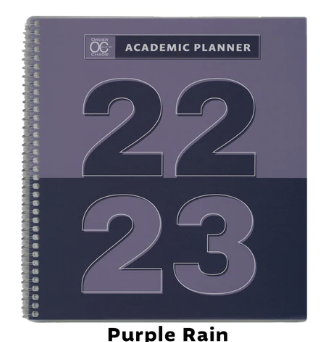
Introductory Pages
The front pages, measuring the same size as the front and rear cover of the planner, include:
- a contact information section so a lost planner can be easily returned
- a class schedule (subject, period, instructor, room #, days) to quickly acclimate students for the new year (and give a fellow student, armed with the contact info, an easy way to find the owner at the right classroom and return a lost planner)
- a Welcome Letter from Leslie to parents
- a detailed set of Planner Pointers, providing excellent guiding tips for making smart use of the planner. (My favorite? Writing “No Homework” if none was assigned so the student never has to wonder if he or she just forgot to write something down.)
- a two-page Planner Use Guide, showing the planner in action — noting assignments, reminders (“Get permission slips signed!”), after-school activities and previews for the next week
- a Study Planning Guide to help prepare for tests and quizzes
- a sample Project Planning Guide to help plan long-term assignments
- a two-page School Year at a Glance
Planner Pages
On the first and last (extra-sturdy) full-sized, the Academic Planner has a vertical index page that peeks out from behind (and to the left and right) of the actual planner pages. This index page means that students record their class subjects only once. Then everything on the upper calendar sections of the planner pages lines up with the appropriate class subjects, course by course, horizontally (with days of the week arrayed, vertically) across a two-page layout.
The next row in the smaller planner is for To-Do items by day. In the letter-sized planners, the left and right front pages provide hourly slots from 2 p.m. until 8 p.m. for students to log after school activities and obligations, like clubs, athletic practice, rehearsals, and jobs.
Other Features
- At the start of each month, there’s a left-side full-page monthly calendar with space to note major events, holidays, and vacations, and adequately plan longer-term projects.
- The right-side Notes page facing the calendar offers up ample room for planning, notes, and the kinds of serious thoughts only people between 12 and 18 can understand.
- There’s a clear poly pocket at the rear of the planner for safely keeping notes, permission slips, and other documents too small for a student’s binder.
- There are oodles of extras, like a library of printouts, downloads, videos, and “how-tos”, as well as downloadable resources like Project and Study Planning Guides, Time Trackers, Homework Checklists, Planner Pointers, Study Skills Videos.
- A bonus Academic Planner Accessories Pack (sold separately, for $10.99) includes a plastic page marker that clips into the spiral binding, so it’s easy to find the current week in the planner, a set of monthly tabs, and a really bright, sunny set of useful stickers.
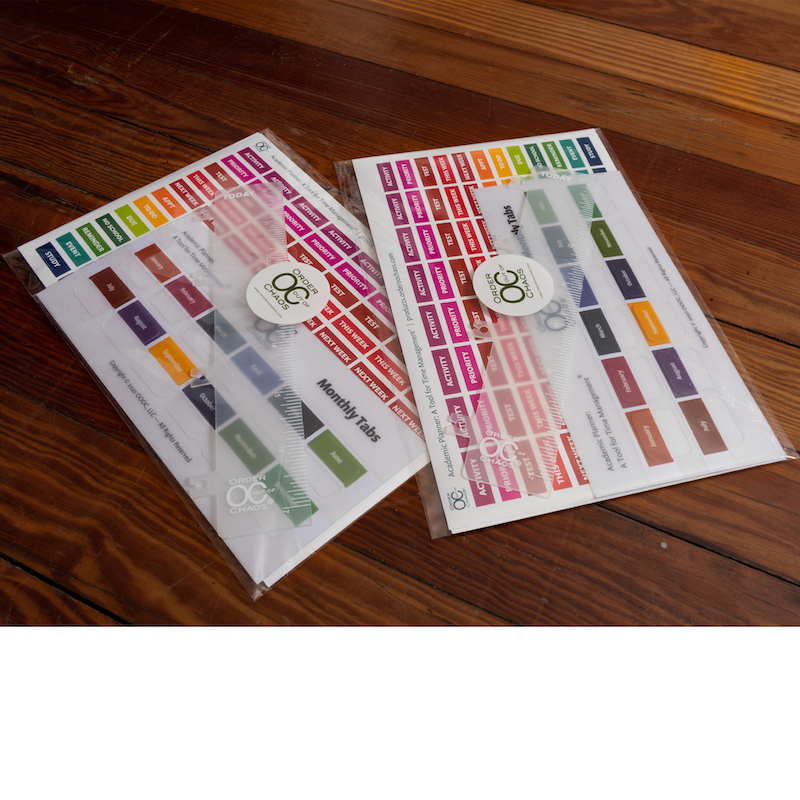 Whew! That was a lot. To really do justice to the 2022-2023 Academic Planner: A Tool for Time Management®, take a detailed walk-through with Leslie herself. It’s like having a private coaching session!
Whew! That was a lot. To really do justice to the 2022-2023 Academic Planner: A Tool for Time Management®, take a detailed walk-through with Leslie herself. It’s like having a private coaching session!
And since this post is about saving money for back-to-school, use the promo code PLANNER20 at checkout to get 20% off any academic planners you purchase directly from the Order Out of Chaos website. This promo code expires September 30, 2022.
(If you prefer to order through Amazon, the 8 1/2″ x11″ planner and 8 1/2″ x 8 1/4″ planner sell for the same price.)
Enjoy your summer, but remember that a little planning and organizing now can make back-to-school shopping less costly, less stressful, and a bit more sunny!
And, just a reminder if you missed my last post, Paper Doll on Planning & Prioritizing for Leadership, we’re only one week into the free, 3-week, The Leader’s Asset interview series. You can still register and catch my interview this Wednesday, July 27, 2022.
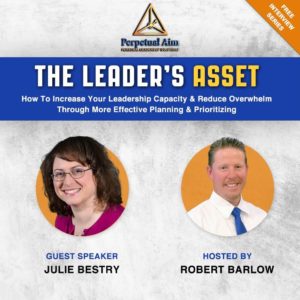
Disclosure: Some of the links above are affiliate links, and I may get a small remuneration (at no additional cost to you) if you make a purchase after clicking through to the resulting pages. The opinions, as always, are my own. (Seriously, who else would claim them?)
Paper Doll on Planning & Prioritizing for Leadership
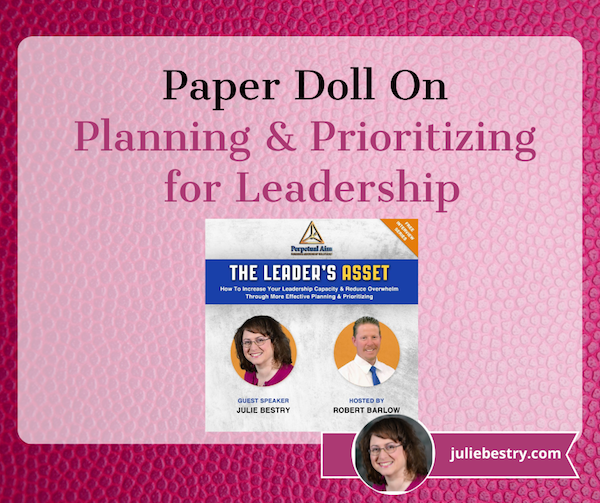
You’re used to reading what I have to say about organizing and productivity in the pages of the Paper Doll blog. It might be easy to imagine me as some disembodied robot, typing away. But I am a real (and lively, and talkative) person, and I’ve been delighted to spend the early part of this summer getting to talk about my favorite topics with other experts for the benefit of people interested in guidance on these issues.
In fact, I’ve done four interviews over the past two months, three of which have been for podcasts, which I’ll tell you about later in the post. But today, I’d like to tell you about a really interesting (and FREEEEEE) opportunity for you to learn about planning, prioritizing, and leadership. (And remember, leadership isn’t just about being “in charge” at work. We lead in our homes, in our volunteer areas, and in our communities. Wouldn’t it be nice not to be overwhelmed there, too?)
I’d love for you to join me, along with a few of my beloved productivity colleagues (Frank Buck and Augusto Pinaud, about whom you heard oodles back in Paper Doll Picks: Organizing and Productivity Podcasts), and twenty other specialists for a FREE, 21-day, virtual event.
This event is for those of you who have a desire to accomplish more (of the right things) but have less stress, and to stop feeling stuck or frustrated because you’re not further along. (And since we’ve just come off a five-part series on toxic productivity, you know how that hamster wheel gets us spinning in circles, but not necessarily getting anywhere.)
The official name for this event has so many words in it, you’d think it was a Paper Doll blog post!
The Leader’s Asset: How To Increase Your Leadership Capacity & Reduce Overwhelm Through More Effective Planning & Prioritizing!
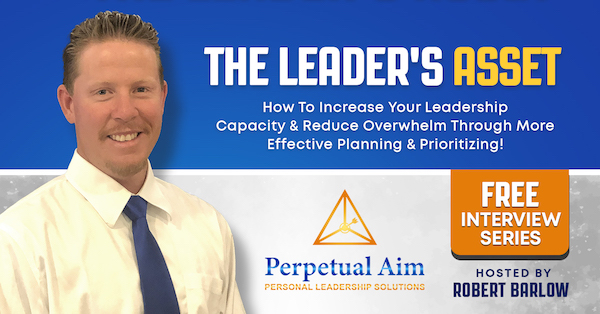
Before I forget, you can head over to my special link http://theleadersasset.com/JulieBestry to register. (This isn’t an affiliate link. I don’t get anything out of you registering except the joy of knowing I get dibs on saying I introduced you to this series. But as you’ll see, I’m pretty psyched about it.)
Each of us joined with The Leader’s Asset founder, Robert Barlow of Perpetual Aim (Personal Leadership Solutions), to record video interviews on subjects covering:
- How to plan and prioritize to reduce your overwhelm
- Ways to effectively beat procrastination
- How to accomplish more (of the right things) in less time
- Solutions to gain control over your email
- Tips, tools, and strategies to make planning and prioritizing more effective
- Dealing with distractions and keeping urgent tasks from derailing your focus
- And many more nuggets of wisdom and learning
These are not long, droning PowerPoint presentations. Instead, these are short, information-packed, conversational interviews with zero fluff. Every interview with Robert clocks in at about 20 minutes. (OK, you know I’m a talker, so mine is a few teensy minutes more!)
The point is that you will walk away from each interview with actionable strategies you can use right away and some newly-tweaked mindsets that will, as Robert says, TAKE YOU TO THE NEXT LEVEL!
So, would you (or your spouse, or your bestie, co-workers, and pals) like to hear from a diverse group of experts on how to be more successful leaders by really grasping the whole magic of planning and prioritizing?
How does it work? Once you register, you’ll get a welcome email, and then beginning Monday, July 18th, you’ll get an email each morning with a link to that day’s interview. Again, the 21-day series is free, but you’ll also have a chance to upgrade to a VIP package, with lifetime access to the recordings and some special opportunities Robert has in store.
So come on and register for The Leader’s Asset Interview Series.
Curious about who else is participating besides me, Frank, and Augusto? I don’t want to spoil any of Robert’s surprises, but I can give you a preview of some of the variety of talent he’s put together for this series, which includes:
- Bob Wendover has built a business helping people beat burnout, improve workplace problem solving skills, and develop critical thinking capacity.
- Oleg Konovalov is a global thought leader, author, business educator, consultant, and C-suite coach. He’s known as the DaVinci of Visionary Leadership, and uses his research to help entrepreneurs and managers identify their strategic needs in the terms of leadership.
- Shanda Miller is a leadership coach, trainer, and writer, and author of the book From Supervisor to Super Leader.
- Eva Medilek is a coach who teaches high performance success habits so her clients can leave behind their burnout, overwhelm, and exhaustion.
- Divya Parekh combines her biopharmaceutical career with experience as a coach, author, consultant, and speaker to help individuals become better leaders.
And that’s just scratching the surface. So I invite you to come play in The Leader’s Asset Interview Series sandbox with me, Robert Barlow, and these experts. Take 20 minutes a day to get some gems on how to improve your planning and prioritizing so you can work smarter (and healthier), lead better, and enjoy it all more.
UPDATE: The schedule has been announced, and my interview will go live on Wednesday, July 27, 2022! (Frank’s is Tuesday July 19th; Augusto’s is August 6th. But register to find out the whole schedule and start watching on Monday, July 18th!)
DIDN’T I SAY SOMETHING ABOUT PODCASTS?
I did!
As I mentioned at the top, I’ve been delighted to have been interviewed for three podcasts recently. In my own way, I’ve been working on different aspects of “leadership” in terms of bringing productivity and organizing to a wider audience, beyond my Paper Doll family, clients, and speaking audiences.
I’ve written recently about how I’ve just recertified as a Certified Evernote Expert (formerly Evernote Certified Consultant). In the next month or so (schedule: TBA), I’m excited that I’ll be a guest of the fabulous Ray Sidney-Smith on his new season of the Getting More Done with Evernote podcast. Ray always asks insightful questions and our mutual geeking out over Evernote will make you feel like you were in the room with us.

Toward the end of the summer, I am agog to report that I’ll be a guest on The NAPO Stand Out Podcast with the savvy and chic Clare Kumar! We had an amazing and free-wheeling conversation about some of my favorite organizing topics!
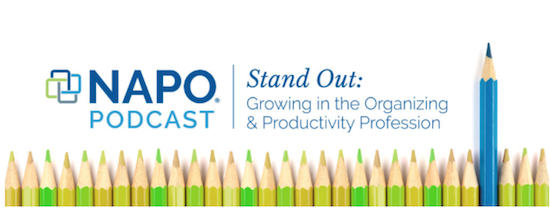
And bringing this all full circle, because Dr. Frank Buck was the one who introduced me to Robert Barlow for the interview series, I was recently on an episode of Frank Buck: Productivity for Total Control & Peace of Mind. He even named the episode “Julie Bestry: Don’t Apologize…Organize!” and you know how I love that!
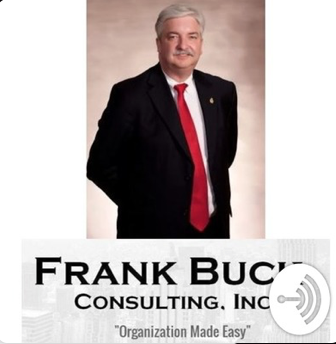
Listen to the podcast at the show link or via Apple Podcasts, Spotify, or wherever you like to get your podcast mojo going, and lookie, the YouTube video is embedded below. The magic of the internet! (But hey, if you enjoy what we have to say, please click through to YouTube and leave a comment so Frank can feel the love, too!)
So, it may be the lazy, hazy days of summer, but I’m trying to keep you entertained and informed on all things about organizing and productivity.
Oh, and if you sign up for The Leader’s Asset Interview Series, please let me know (so I can do a happy dance), and feel free to come back to this post and let me know any gems you learn from the interviews, whether mine or from one of the other experts.
Happy summer!
Toxic Productivity Part 5: Technology and a Hungry Ghost
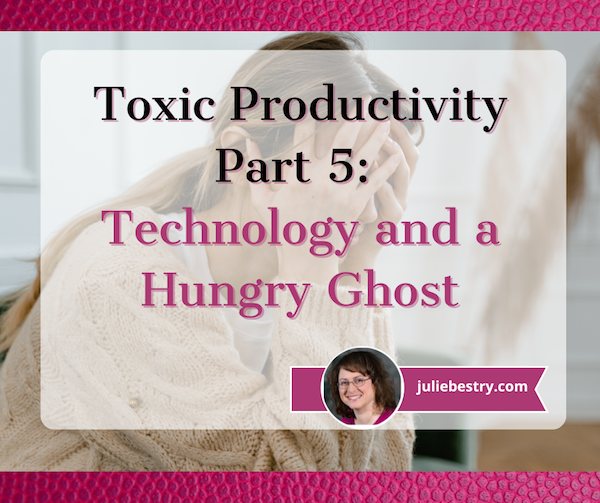
THE MANY TENDRILS OF TOXIC PRODUCTIVITY
I checked in with a friend the other day to see how her new job was going. Her company, an international conglomerate, had laid off several people over the past six months, including my friend, but also did some internal hiring. She’d been excited about getting the new job, but seemed blue when we spoke.
“I’ll be honest,” she told me, “if I hadn’t already worked for this company for years, I’d think I was incompetent. This is really hard.” My friend, a veteran of many, many promotions for merit, is definitely not incompetent. It turns out that only one person had ever held this position before, and was fired after being unable to keep up with the demands.
When I hear these stories from my clients, the first thing I do is get a sense of whether the problem is that someone needs more support or guidance at work. In terms of support, even though she’s at the same company, my friend’s work situation is different, and she’s no longer got the support of a team structure; rather, everyone is on his or her own, with no cross-training and no backup. The company still seems to have unreasonable expectations of how much can be humanly accomplished, as we discussed at the start of this series, in Toxic Productivity In the Workplace and What Comes Next.
Next, she and I talked about the Pareto Principle (AKA: the 80/20 Rule, which we discussed last week in Toxic Productivity, Part 4: Find the Flip Side of Productivity Hacks) and I asked my friend if she’d talked with her boss about priorities, and what the most important aspects of the job needed to be right now.
Remember, 80% of the success comes from 20% of the effort, so finding that 20% can eliminate a lot of the stress and busy-work, creating more mental energy to tackle other aspects of the work.
The Pareto Principle says 80% of the success comes from 20% of the effort, so finding that 20% can eliminate a lot of the stress and busy-work, creating more mental energy to tackle other aspects of the work. Share on XI pointed out that, as a valued employee, and as the second person to try to tackle this role, she might be in a position to (gently) point out these unreasonable expectations. (Yes, this is a touchy issue, but it’s the best way to determine if the problem is bad management practices or merely lack of corporate awareness of how many human-hours it takes to accomplish certain tasks.)
My friend then noted that a colleague of hers, another “island” unto himself in a position similar to herss, has been in his role for about a year and a half. Apparently, this guy regularly works until midnight and starts again before traditional work hours, and works through the weekends.
If you’ve been reading this series all the way through, you may agree with me that this is a sign that the worker has internalized the unsustainable expectations and toxic productivity demands of the company.
This isn’t just a problem for my friend’s co-worker. Yes, he’ll probably burn out, which will be bad for him. It’s bad for my friend (and everyone else at her level) because workers with families, non-work obligations and, y’know, lives, can’t reasonably live up to this automaton-like worker-bee behavior. Nor should they try. So, the worker who has internalized toxic productivity (and who may or may not have productivity dysmorphia), is contributing to the escalating expectations for unsustainable productivity throughout the division, even throughout the company!
In other words, he’s screwing over his colleagues, who are now left positioned between having inferiority complexes and developing productivity dysmorphia to compensate (thereby risking their own mental health, their relationships, and more) or having to leave the company feeling like failures, and the company will need to hire new workers and the cycle will begin again. Oy.
Such is the state of many modern workplaces. Terrifying, isn’t it?
And, as we have discussed over the last several weeks, a corporate structure isn’t necessary for this to take place. There’s a hustle culture out there for all of us who work on our own, solopreneurs and small business owners alike, who are cowed by common practices into believing that nothing we are doing is enough, and that we need to keep up with the Joneses (our colleagues or competitors, and not merely our neighbors) at all cost.
EMBRACE NEW VALUES AND PRINCIPLES
The drive to deliver — to produce — misses the point. I posit that as much as you may (or may not) enjoy creating, your purpose on the planet isn’t to produce documents or deliver services or create or to make money. Your purpose is to enjoy yourself and help the people you love enjoy themselves, too.
We’re here to be fulfilled, not to produce widgets, and if enough of us demand that we be treated (and treat others) as humans rather than producers, we might achieve this very thing.
This can feel like pretty hippy-dippy advice in 2022, but I stand by it.
So, first, let’s start with the wisdom high performance coach Sarah Arnold-Hall puts forth about results, not hours.
Let’s start valuing results created, not hours worked. pic.twitter.com/yebU0Zwrq8
— Sarah Arnold-Hall (@saraharnoldhall) May 13, 2022
Now, on its own, this could create a huge feedback loop into productivity toxicity. Produce more, create more, do more! Grrrr. Arrrrrgggh. But we’re not going to do that.
Instead, we’re going to bear in mind what we learned in Toxic Productivity Part 2: How to Change Your Mindset about the necessity of downtime. Those hours when we’re not working are as important as, if not more important than, the hours we are working.
The task-positive brain network, which we use to take all of our accumulated knowledge and turn it into something useful, helps us focus our attention, arrive at solutions to problems, and confidently make decisions. But we can’t do any of that if we don’t also make use of our default mode network, the way our brain blisses out and thinks about anything except the problem at hand when we’re sleeping, resting, relaxing, and enjoying our loved ones and life.
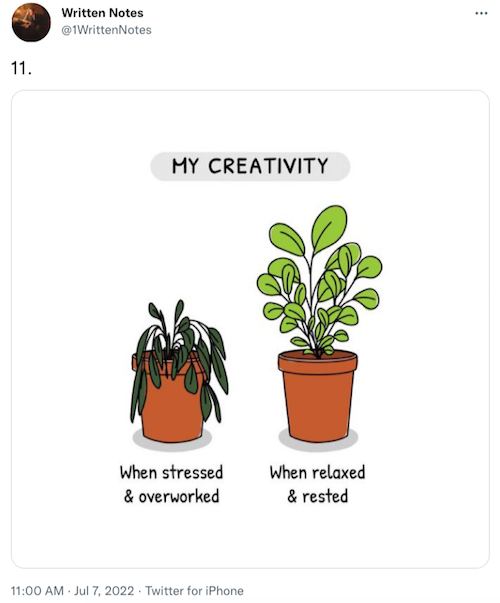
So, once you accept that success isn’t about the hours worked but the worth of what you’ve done in those hours, you have to pivot to understanding that more and more of your hours have to be given over to the downtime that allows you to create anything worthwhile. Recognizing the finitude of life is key to that attitude change. (Remember that when you get to the end of this post!)
So, what have we learned about healthy productivity?
- It’s not about spending all of your hours on work.
- To make the work you do accomplish valuable, you need to change your mindset and have more downtime.
- Downtime isn’t scrolling through TikTok or Netflix, but truly letting your brain rest and recover — through non-competitive exercise, better sleep, eschewing multitasking, increasing opportunities for a quiet mind, and asking yourself the essential questions about the life you’re currently living and how it compares to the one you truly want — as we discussed in Toxic Productivity Part 3: Get Off the To-Do List Hamster Wheel.
- We can use the same productivity tools designed to help us overcome procrastination and get more done to slow ourselves down to the speed of life. This includes embracing better and smaller (atomic) habits, using the Pareto Principle to focus on what’s truly worthy of being a priority, employing the Pomodoro Technique and block scheduling to focus our work time and ensure our break time.
— Liz Fosslien (@fosslien) June 23, 2022
What else can we do?
CONSIDER TECHNOLOGY’S ROLE
It’s easy to think that technology is essential to productivity. Look at how much more humanity accomplished after the Industrial Revolution vs. when we had an agrarian society. How much more could we accomplish with telephones than when we had to wait for the postal service or telegrams? Certainly we got much more accomplished once we added email to our resources, right? (cough, cough) And surely we’ve reached a pinnacle of productivity now that we have Slack and Asana?
Hopefully, you detected my sarcasm. Yes, technology yields vast improvements in our ability to communicate quickly (if not always clearly, as the multigenerational confusion over emoji and whether ending sentences with periods is an insult have proven), but all of these aspects of technology have led to the always-on misery we discussed at the beginning of the series. France gets it; most of Europe gets it. The US does not yet get it.
We have an inalienable right to disconnect, but it’s going to take all of us, together, to stand up and keep secure that right.
Communication technology is not the only problem.
Along with communication technology, these last few decades have seen a growth in productivity technology, from software and apps that help us brainstorm, assign ourselves (and others) tasks, and conquer our foibles and deficiencies in terms of procrastination, motivation, focus, capturing information, organizing our thoughts, collaborating on projects, and so on.
I am not a Luddite. I believe in the power of technology to make things easier, but sometimes we’re making the wrong things easier. Take collaboration. While Thomas Jefferson wrote the original draft of the Declaration of Independence, historians (including Pauline Maier in American Scripture: Making the Declaration of Independence) have shown how the handwritten edits suggested by the members of the Second Continental Congress became a complicated collaboration.
 In a document listing colonial grievances against the King George III, members of the Congress made Jefferson take out references to slavery and put in references to a Supreme Being (and fishing rights). The handwriting was that of Secretary Charles Thomson; he controlled the document’s additions, deletions, and revisions requested and/or demanded by the cacophony of voices representing 13 colonies.
In a document listing colonial grievances against the King George III, members of the Congress made Jefferson take out references to slavery and put in references to a Supreme Being (and fishing rights). The handwriting was that of Secretary Charles Thomson; he controlled the document’s additions, deletions, and revisions requested and/or demanded by the cacophony of voices representing 13 colonies.
Now imagine that same collaborative product in Microsoft Word’s Track Changes or Google Docs’ comment section. Now multiply the different voices and competing methods listed on this Wikipedia entry listing types of collaborative software. (I’ll wait while you scroll.) If you know how to be productive in one technology, you might still be flummoxed in another.
The number, variety, complexity, and interoperability (and lack thereof) of technology solutions can be overwhelming.
Have you ever heard about a new task app and wondered if it could be the solution to all of your troubles? Have you tried Todoist? Anydo? TeuxDeux? Remember the Milk? Things 3? Google Tasks? What about more complex productivity suites, like Basecamp? Trello? Clickup? Asana?
In case you were wondering if I’d suggest one app to rule them all, I’m afraid that’s not the case.
The truth is, the best productivity app is the one you’ll use. The one you’ll commit to learning, commit to using, and the one you won’t “cheat” on when another shiny app starts flirting.
The truth is, the best productivity app is the one you'll use. The one you'll commit to learning, commit to using, and the one you won't 'cheat' on when another shiny app starts flirting. Share on XUnfortunately, some productivity technology overwhelms even the most diligent users. This may be because the information we get out of our productivity technology is only as good as the information we put in, and we humans are already overwhelmed.
All of these apps, working at the speed of light (and life), can’t prioritize for us. We capture tasks with the click of a button, but we are so pressed for time (and productivity) that we fail to take the requisite moments to figure out what work has value and what is busywork.
So, are we supposed to get rid of technology altogether to combat toxic productivity?
Remember how I said I wasn’t a Luddite? Well, I’m not asking you to be one either. Chances are, if you work for a company that you don’t own, you’re stuck with some technology required by your workplace. But in the areas where you do have control over which types of technology you use, I often suggest that my clients put technology completely aside for a little while.
If you’ve got a task app or other tech that works well for you, stick with it. But if you feel beaten down and bruised by the very tech that’s supposed to keep your head above water, try slowing everything down.
- Go analog with your time displays. Wear an analog watch, or set your fancy Apple Watch or Fitbit to display time in an analog manner. Do the same with the display for the clock app on your phone. Seeing time as it ticks by will help you appreciate the finitude of time and feel more in tune with how much you can reasonably accomplish in an hour or a day. (You might want to brush up on Back-to-School Solutions for the Space-Time Continuum for more ideas.)
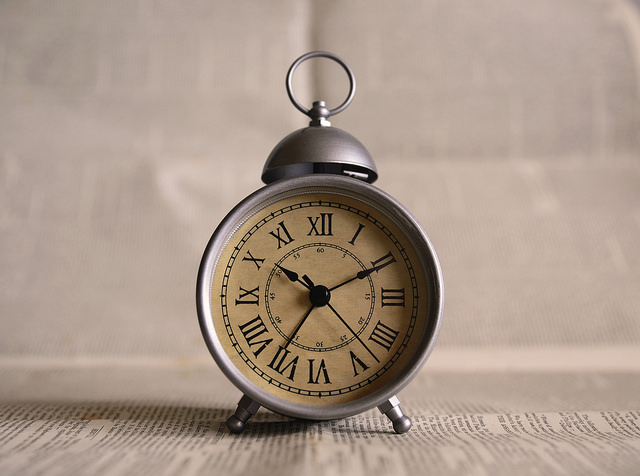
- Opt for paper over tech to learn key productivity skills. I’m a Certified Evernote Expert, so I realize all of the excellent benefits of collating your clipped websites, inbound emails, saved articles, etc., digitally, tagging them, and organizing them into notebooks. But when you’re overwhelmed, sometimes having your resources, your printed instructions, and other task-triggering action paperwork right in front of you, without need for WiFi or even electricity, can help you slow down and focus without the buzz of the digital world.
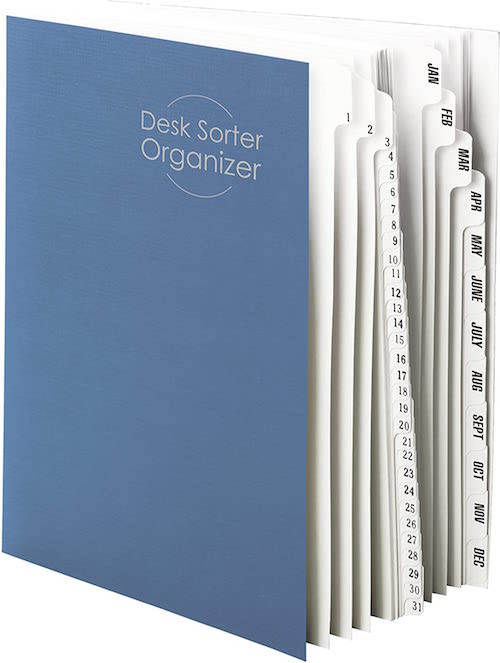
One of the many reasons I recommend tickler files for my overwhelmed clients is that learning the process of looking at task-triggering papers and making qualitative decisions (regarding priorities) and chronological decisions (regarding when you can reasonably accomplish specific tasks) is an essential skill for improving productivity in a healthy way. It’s the reason I wrote Tickle Yourself Organized.
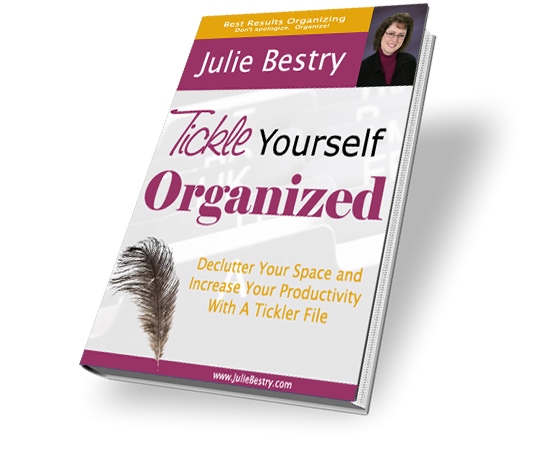
- Consider bullet journaling. I’ll be honest, bullet journaling stresses me out. I understand that it’s not necessary to embrace the fancy, artistic designs some people use, but the very hands-on, tangible customization options overwhelm me, and the idea is to achieve healthy productivity by removing overwhelm. But I’m not you. Hundreds of thousands, perhaps millions, of people swear by bullet journaling for tracking tasks and other information. They can’t all be wrong.
PULL IT ALL TOGETHER AND HALT A HUNGRY GHOST
Hopefully, over this past month, you’ve come to recognize that not only are you not a robot, but that it’s unacceptable for anyone — your company, your clients, your mother-in-law, or you — to expect non-stop labor from you.
If machines don’t operate at 100%, why do we expect so much from ourselves?
— Junhan (@junhanchin) May 24, 2022
You’re a living, breathing human being. But you may have a ghost in your machine.
In Brad Stulberg‘s recent post The Constant Restlessness You Feel Has a Name, he describes how many of us experience a constant grind he calls “heroic individualism.”
Heroic individualism says that you will never have enough, be enough, or do enough. It is an endless gauntlet of more. While it may lead to decent short-term performance, long-term, it is a recipe for disaster. This is because long-term fulfillment depends upon things that are inherently inefficient and unproductive, at least on acute timescales.
Sound familiar?
When you look at the ten symptoms of heroic individualism that Stulberg lays out, some of it bears a striking resemblance to toxic productivity and Anna Codreo-Rado‘s perception of productivity dysmorphia, such as:
- Low-level anxiety and a sensation of always being rushed or in a hurry — if not physically, then mentally.
- Not always wanting to be on, but struggling to turn it off and not feeling good when you do.
- Feeling too busy, but also restless when you have open time and space.
- Successful by conventional standards, yet feeling like you’re never enough.
Stulberg’s describes the Buddhist concept of the hungry ghost:
The hungry ghost has an endless stomach. He keeps on eating, stuffing himself sick, but he never feels full. It’s a severe disorder.
The modern world that so many of us inhabit depends on the creation of hungry ghosts. But you, me, all of us can choose to opt out of this game. We don’t have to become hungry ghosts. We simply need to step back and reflect upon what it is that we actually want. Simple, sure. But not necessarily easy.
To combat this hungry ghost, this toxic productivity, this productivity dysmorphia, Stulberg recommends the concept of groundnessness.
His book, The Practice of Groundedness: A Transformative Path to Success That Feeds—Not Crushes—Your Soul, combines research from psychology, neuroscience, and sociology (as we looked at in the first three posts in this Toxic Productivity series), as well as religious and philosophical teachings from Buddhism, Taoism, and our old friend-of-Seneca, Stoicism.


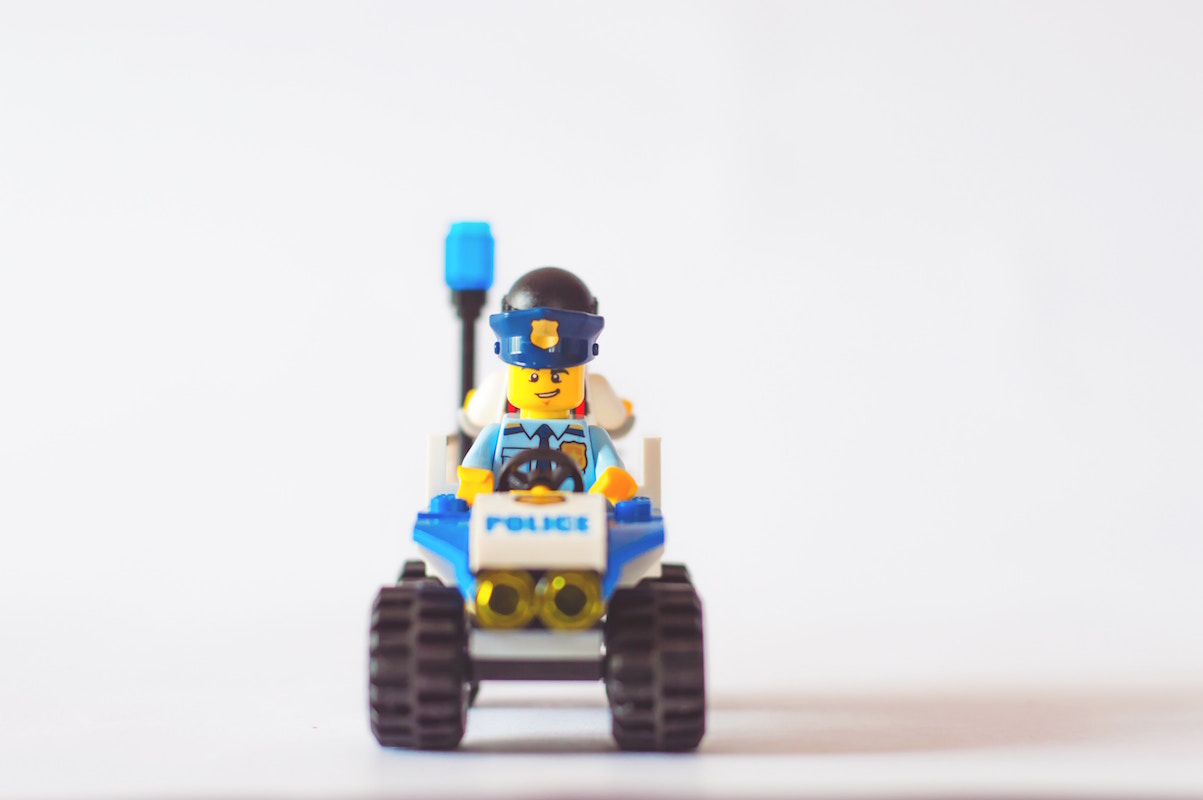 Photo by
Photo by 

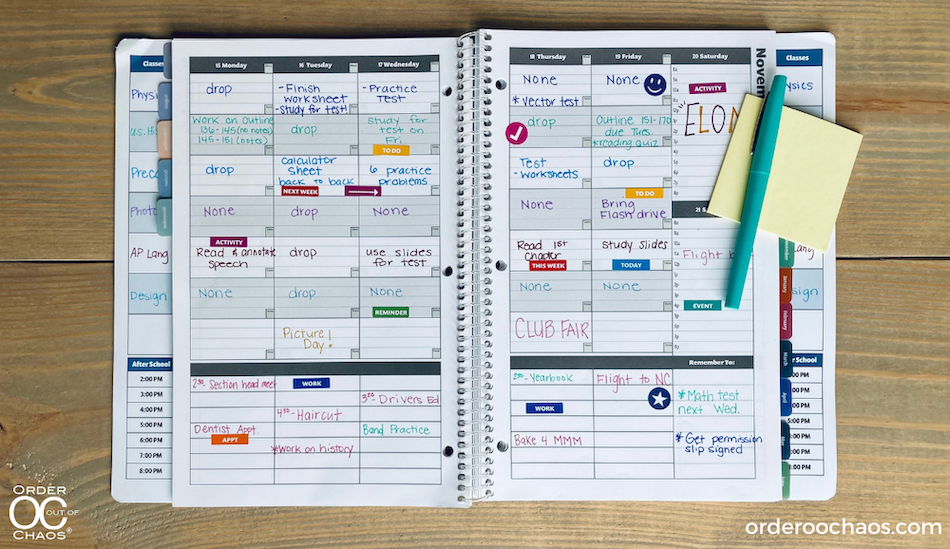





Follow Me